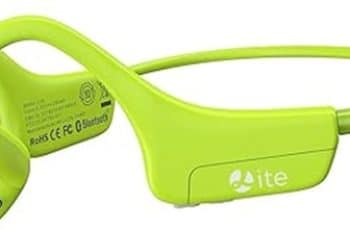How to choose the right headphone and what constitutes a decent set of headphones for you will largely depend on your unique requirements and circumstances. Would you like to utilize them on the road or during your workouts? Will they be mostly used for creating music or for casual listening? In order to assist you in selecting the ideal pair of headphones, let’s keep these circumstances in mind while we go over some of the key characteristics that set them apart.
How do I pick the best headphones? You’re capable of this.
Headphones rank close to the top of the list of common devices that have an impact on one’s quality of life. We wear them on trains and airplanes, run with them on, go to bed, and some of us even eat, drink, and fall asleep with headphones on. What’s the point? Your life is enhanced by a nice pair. And a less than ideal duo? Not in that way.
So stay put, and over the course of the next five to ten minutes, we’ll help you sort through the chaos, make fewer decisions, and perhaps even open your eyes and ears. Additionally, if all you’re searching for is a list of the most often requested queries. if you want to jump ahead and view a list of our top picks for headphone accessories.
9 Factors To Consider How To Choose The Right Headphone
1. Identify how you will use your headphones
Which settings will you be utilizing your headphones in the gym, your listening room, or when traveling? or perhaps each of the three? The remainder of this guide will assist you in selecting the appropriate headphones for your needs. Different headphones are superior in different scenarios.
2. On-ear, over-ear, and in-ear headphones
The way these listening gadgets fit your head and ears may be their most noticeable feature. The following are the most typical ones that exist today:
Over-ear headphones:
They are made to cover the whole ear. There is a price for this, but it can be very effective at preventing sounds from both seeping out and entering. Their size may make them less appealing to people who are active or on the go, but when it comes to creating music or listening intently, they are nearly indisputable. Sony’s MDR series and Audio Technica’s M-Series are two examples of this.
On-ear headphones:
These slide over each ear without completely enclosing it. They combine elements of the two worlds mentioned above; because to larger drivers, they often have superior overall sound quality than in-ear headphones and are lighter and more portable than over-ear headphones. Grado’s SR series and Sennheiser HD 25 pairs are two examples of headphones that are particularly suitable for DJing.
In-ear headphones:
These are standard “earbuds,” similar to the EarPods that come with an iPhone. These headphones, in contrast to the next two types, are partially positioned inside each ear, allowing for extremely tiny drivers, often known as speakers. Due to their compact size, earbuds are a wonderful option for working out or traveling. They can also effectively block out undesirable background noise.
3. Open-back vs. closed-back headphones
Assuming you’ve made up your mind, you should be aware that over-ear headphones are available in two different types. The purpose of the open-back style headphones’ earcups is to let some sound leak out of them. Due to the exposed architecture, this produces a louder and more roomy soundstage that is excellent for mixing in calm spaces but not recommended for most other settings.
By forming a barrier between the listener’s ears and the outside environment, closed-back headphones effectively achieve the exact opposite effect: nothing enters and nothing exits. This works well for recording live audio since you want the performer to hear the mix while ensuring that just their performance is recorded. These two styles are comparable.
4. Wireless connectivity
It’s the last thing you want to do when you’re inspired to compose music or when you watch your favorite singer release a new song—sort through a tangle of cables. Wireless headphones are fantastic at home because you can move away from your TV or computer without losing audio. They are also helpful for people who commute or travel regularly.
However, before purchasing a pair of these, there are still a few restrictions to take into account. The battery needs to be kept charged, and the headphones can only be used with devices that can broadcast music wirelessly (via something like Bluetooth, typically combined with a proprietary app). Wireless transmission frequently results in a drop in audio quality. Having said that, wireless headphones are increasingly
5. Noise cancellation
When you want to totally block out the outside world, noise canceling works great. However, it has some of the same potential problems as wireless connectivity. If you want complete control over your listening environment, wherever that may be, Bose’s QuietComfort series and Sony’s WH1000-MX3 are good options to check out.
6. Frequency response
Frequency response is something to consider if you’re a music producer who wants to use headphones instead of studio monitor speakers. This indicates how well the headphones’ speakers can replicate sound throughout a range of frequencies (often 20 Hz–20 kHz) with equal accuracy.
To compensate for how near the speakers are to your ears and produce a more enjoyable listening experience, many headphones will increase the low-end and taper off the high-end. Although it’s nearly hard to get a perfectly flat curve, it’s helpful to know how different frequencies will make a set of headphones behave so you can adjust your mixing accordingly.
7. Headphone impedance
Frequency response is something that producers of music should think about if they want to use headphones instead of studio monitor speakers. The degree to which the headphones’ speakers can faithfully reproduce sound throughout a frequency range (often 20 Hz–20 kHz) is measured by this.
To compensate for the speakers’ near proximity to your ears and produce a more comfortable listening experience, many headphones will enhance the low-end and reduce the high-end. It’s nearly hard to get a perfectly flat curve, but you can adjust your mixing properly if you know how a set of headphones will react to certain frequencies.
8. Options, add-ons, and accessories.
Amplifiers
Why one would be desirable: The performance of headphones is increased by a quality headphone amplifier. A headphone amplifier can retrieve subtle, low-level digital data that is frequently hidden during recording, among other things. Greater clarity, a wider dynamic range, and astonishing detail are the end results.
Use the appropriate patch cord to connect your device to the headphone amplifier. Various patch cords are typically included with amplifiers; select the one that is compatible with your device, be it a phone, tablet, receiver, etc.
DACs
Analog to Digital Converter is DAC. The detail and dynamics included in the original analog recording are absent from digital music in MP3 format due to heavy compression. The digital file may be converted back into an analog file using a DAC, and the analog file is considerably more similar to the original studio recording. Even while DACs are already included in digital music players, a better, independent DAC will convert your audio files with greater accuracy.
Cables & Stands
Many over-ear headphones have cases included to shield them from damage and dust. However, a headphone stand is a terrific way to showcase your gear if you listen to them often and want to show off. Some manufactures sell replacement components so you can maintain your headphones looking brand new in the event that you need to upgrade your ear cups or headphone cord.
9. Comfort and cost
Many over-ear headphones have cases included to shield them from damage and dust. However, a headphone stand is a terrific way to showcase your gear if you listen to them often and want to show off. Some manufactures sell replacement components so you can maintain your headphones looking brand new in the event that you need to upgrade your ear cups or headphone cord.











